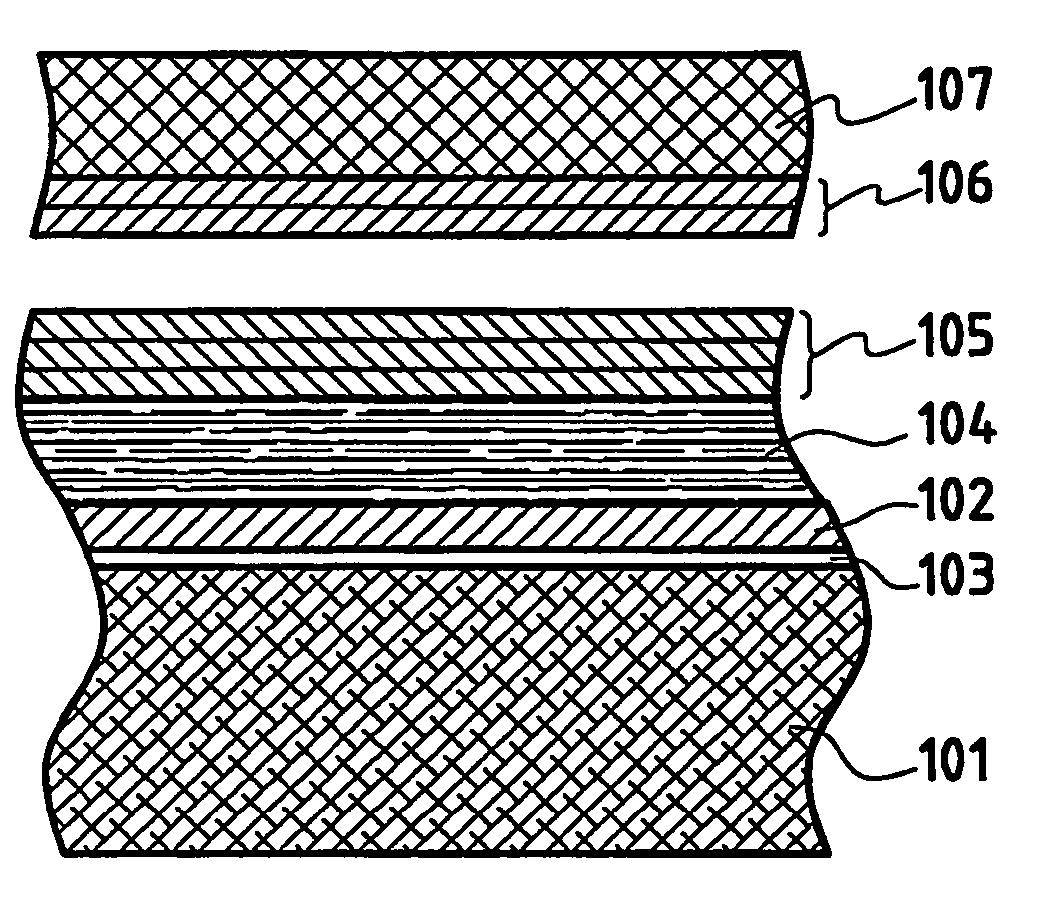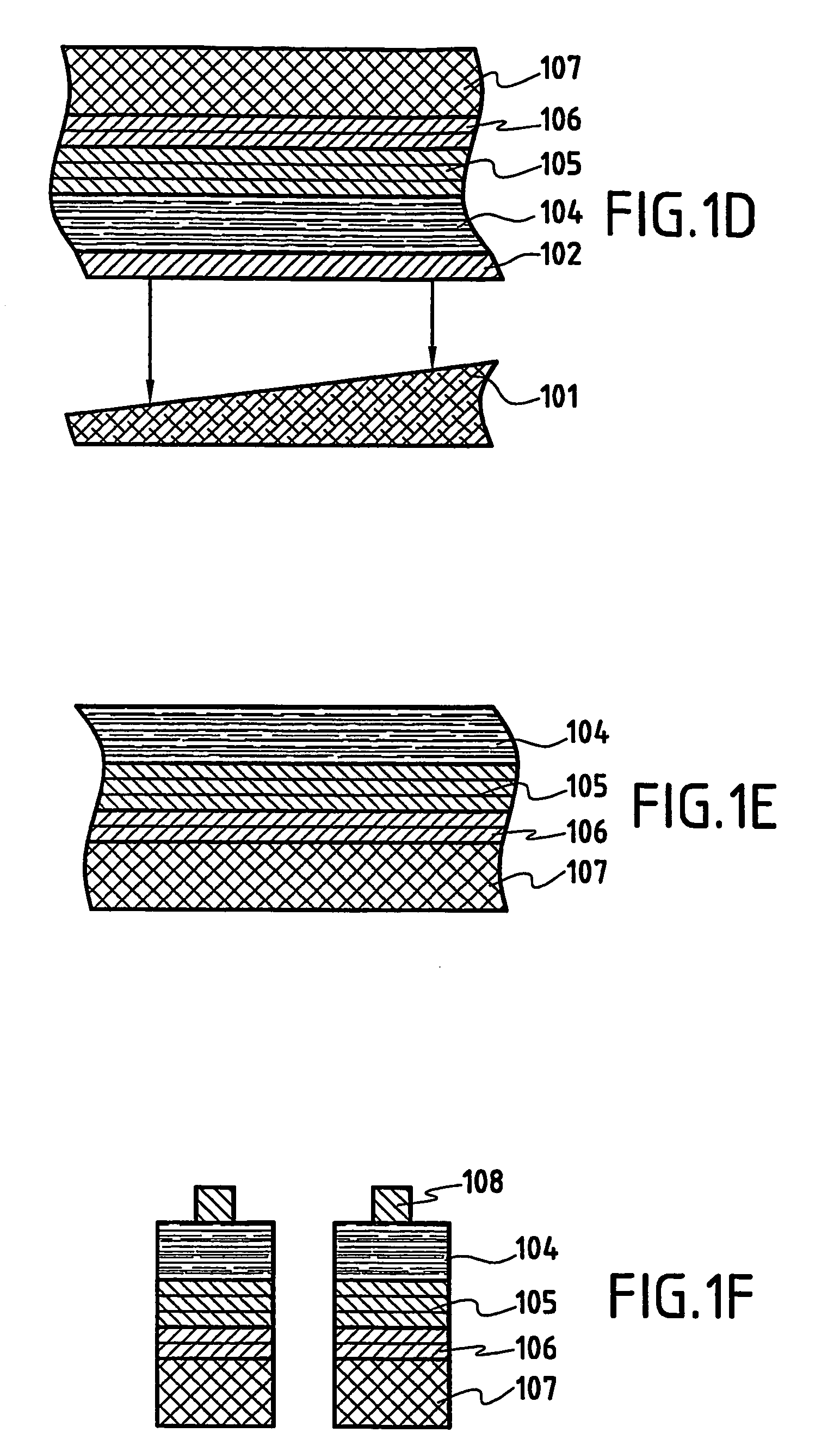Multifunctional metallic bonding
a multi-functional, metallic bonding technology, applied in the direction of basic electric elements, electrical equipment, semiconductor devices, etc., can solve the problems of poor mechanical strength, pd—in stacks is unsuitable for mechanical release of initial support substrates, and limited techniques
- Summary
- Abstract
- Description
- Claims
- Application Information
AI Technical Summary
Problems solved by technology
Method used
Image
Examples
Embodiment Construction
[0025] Metal bonding is preferably used to bond the transfer layer and the final substrate. Metal bonding is considered to be sufficiently strong mechanically and compatible with the subsequent step of separation at the weak interface without resulting in mechanical damage to the metal bonding interface and without destroying the initial support.
[0026] Metal bonding is advantageously achieved, for example, using a stack of layers comprising at least one ohmic contact layer formed directly on the epitaxially grown layer of semiconductor material, a reflective layer, and a layer based on gold or aluminum. The reflecting layer (mirror) is preferably based on silver, aluminum, rhodium, platinum, or gold. A supplemental layer can also be provided to act as a diffusion barrier, which can preferably be based on tungsten, titanium, chromium, platinum, or tantalum.
[0027] Metal bonding can be carried out using a metallic deposit formed on the transfer layer, the final substrate, or both. Th...
PUM
| Property | Measurement | Unit |
|---|---|---|
| thickness | aaaaa | aaaaa |
| thickness | aaaaa | aaaaa |
| thickness | aaaaa | aaaaa |
Abstract
Description
Claims
Application Information
 Login to view more
Login to view more - R&D Engineer
- R&D Manager
- IP Professional
- Industry Leading Data Capabilities
- Powerful AI technology
- Patent DNA Extraction
Browse by: Latest US Patents, China's latest patents, Technical Efficacy Thesaurus, Application Domain, Technology Topic.
© 2024 PatSnap. All rights reserved.Legal|Privacy policy|Modern Slavery Act Transparency Statement|Sitemap



